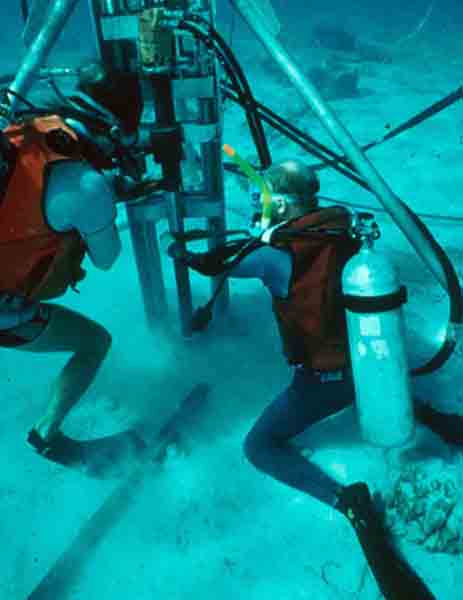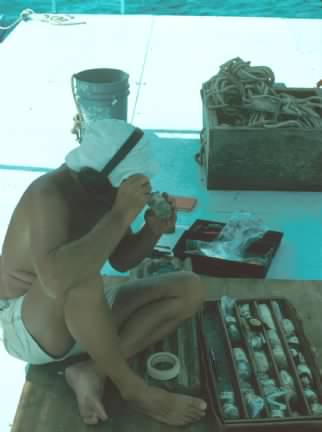The introduction of the submersible coring system by Ian Macintyre in the early 1970's heralded a revolution in coral-reef geology. For the first time, we had the ability to recover cores from the reef interior at a reasonable cost that was within the financial realm of academic scientists. Since that time, coring investigations have spread throughout the Caribbean (see map below: red dots are WIL core sites; yellow dots show investigations by other research groups including the Smithsonian, the U.S. Geological Survey and the University of Miami).
Early projects focused on the shallow reef crest, assuming that emergence reflected the highest rates of accretion and, therefore, the thickest reef sequences to be found. The coring program started at the West Indies Laboratory in the US Virgin Islands expanded our interests to include the deeper shelf edge. What we learned is that these deeper reefs tell a different story that goes back nearly twice as far as that for their shallower counterparts. Often these reefs are thicker than those in shallow water because sea level was rising more quickly when it broke over the shelf edge and the reefs had to build faster to keep up.
Furthermore, the deeper reefs are dominated by branching acroporids which are at the heart of the recent debate about coral-reef decline and its causes. Thus, these deeper reefs hold important information about natural changes in reef-community structure that provide a backdrop against which recent decline can be evaluated. Separating anthropogenic decline from natural cycles that operate on a timeframe longer than the life of a scientist or research project is of paramount importance if we are to understand recent changes in coral-reef community structure in the face of ever-increasing human stress and overexploitation.
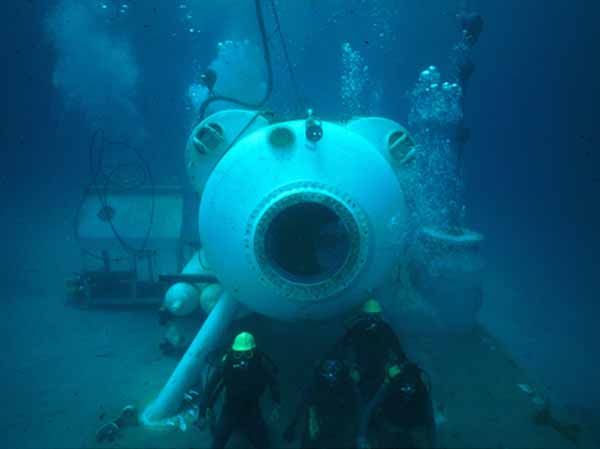
Drilling crew in front of Hydrolab during a saturation mission in which scientists drilled laterally into the walls of Salt River Submarine Canyon in water depths up to 40 meters.
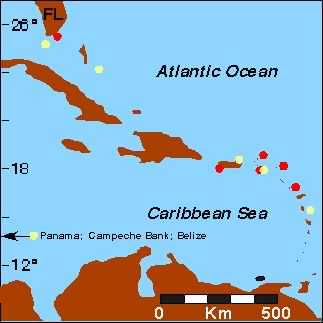
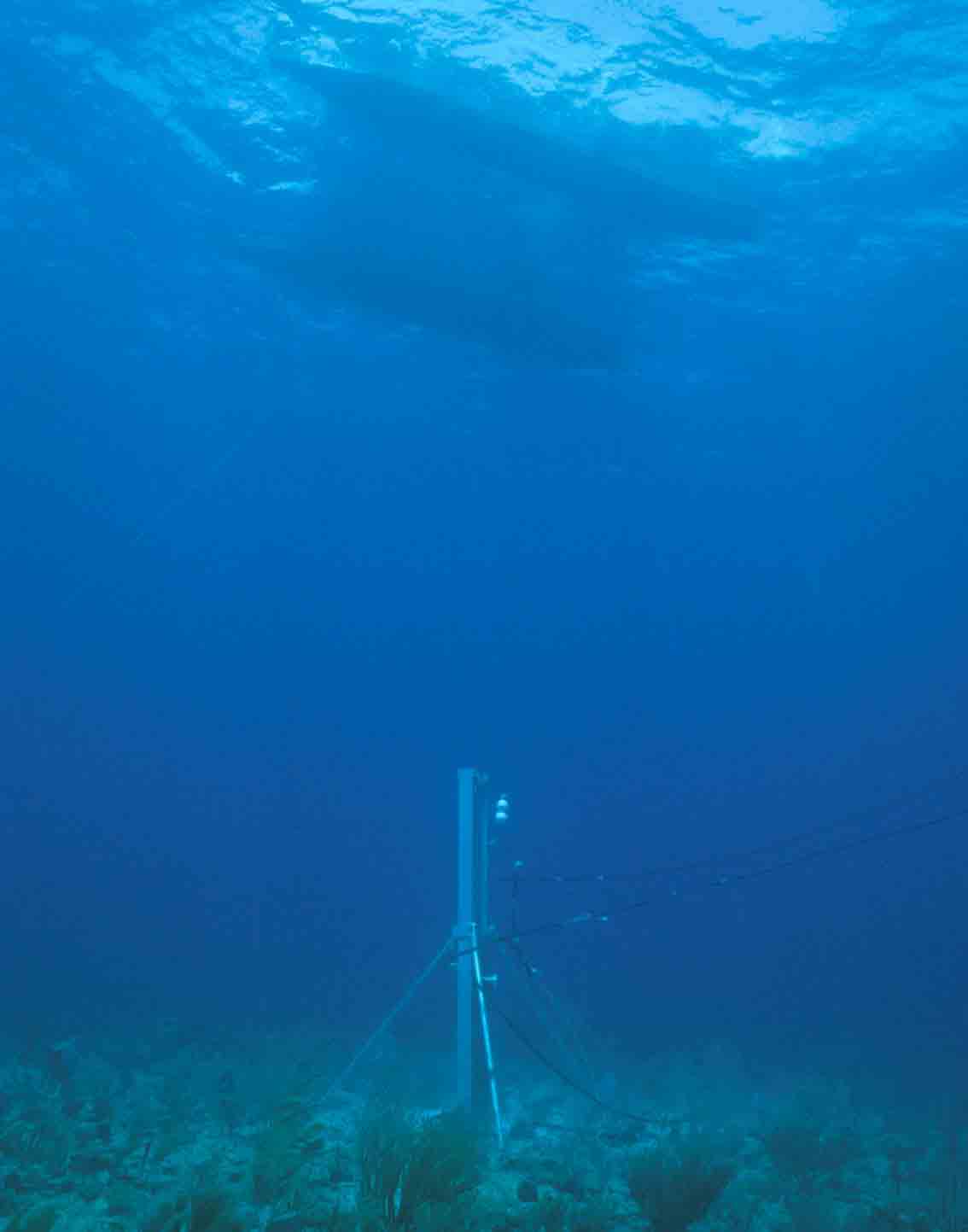
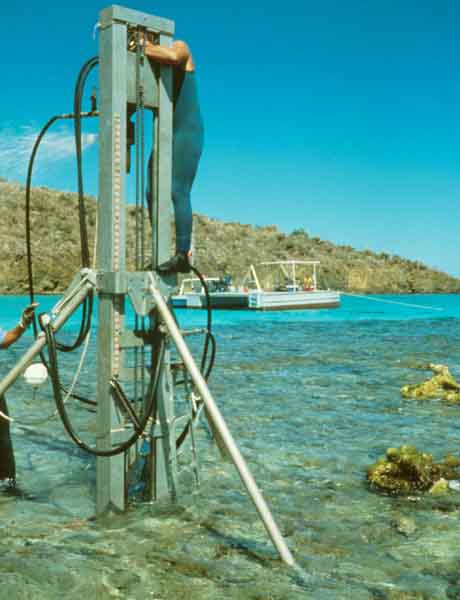
Coring in deeper water was facilitated by the development of the SCARID drilling system which allowed for longer cores in deeper water. The drilling frame is 3 meters high and the drill runs along stainless steel rails that keep the core barrel traveling parallel to the hole as drilling proceeds. A 21-hp diesel motor on the support barge drives a 1200 psi hydraulic pump that delivers power to the drill through hoses.
At left: Divers recover core from the southern reef crest in Buck Island Underwater National Monument in the U.S. Virgin Islands. The support barge is seen in the background.
Below left: The operator raises and lowers the drill using a hand crank that controls a stainless steel chain drive. Tactile feedback between the core barrel and the operator travels along the solid connection provided by the drive system and helps the operator to "feel" changes in the substrate. These changes are characterized in drilling notes and are referenced to the cm scale visible on the left side of the drilling frame.
Below center: Divers separate the drill motor from the core barrel. After this is completed, the inner core barrel is recovered and taken to the surface, where the contents are removed, numbered and logged. A new inner barrel is dropped in place, a 152-cm extension rod is added, and drilling contiues.
Below right: Undergraqduate student closely examines the samples recovered by the SCARID drill. Coral is identified to species level and the length and character of each core piece is recorded. This information is used to create a graphic log that summarizes core recovery and interpreted changes in the reef interior throughout the core.

